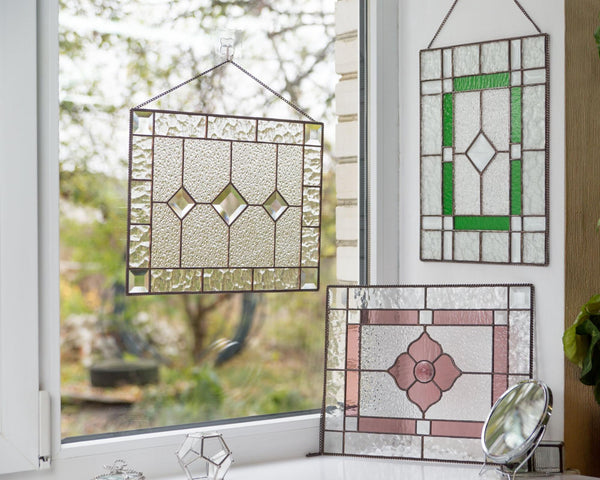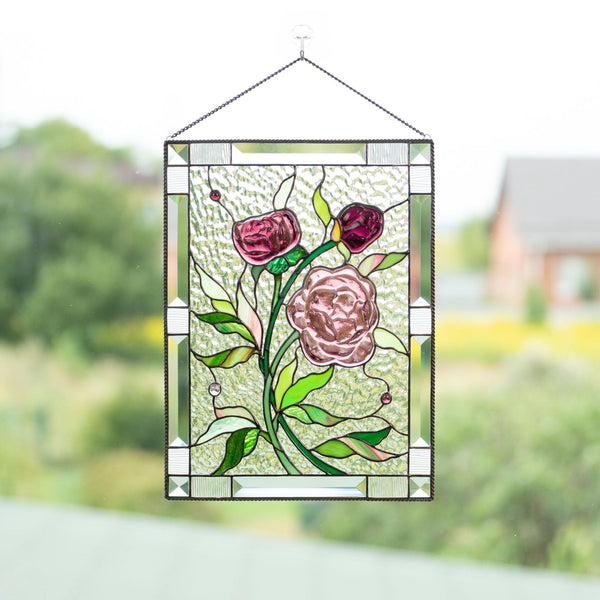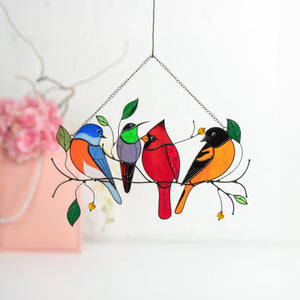Types of Stained Glass: Exploring the Varieties of Stained Glass Art
The history of stained glass begins deep in antiquity, but its further development showed that this original find is fraught with an abyss of potential discoveries and applications. At first, stained glass art was used in temples, palace buildings, churches, but later, a secular society also expressed interest in stained glass.
History
The word “stained glass” comes from the French word “vitre”, meaning window glass. Now stained glass is far from just “a window glass”, but an entirely independent type of applied art aimed at decorating the interior and exterior of our homes, offices etc.
Stained glass appeared during the days of Christian temple construction. Prior to this, the ancient Romans and Greeks laid mosaic walls and floors from opaque glass. The basis of the Christian church was a basilica - a type of public house, the church had window openings, different from the ancient one, they were covered with stained glass.
The creation of transparent glass was invented in Venice in the II half of the 1
5th century. Since then, stained glass has become a full-fledged part of interiors. The scenes from the Bible were depicted in the stained glass windows, and it became the personification of Christian mythology.
New technologies gradually appeared, transparent glass began to be painted and fired. At the same time, sandblasting of glass appeared.
With the advent of the Renaissance, the secular episodes replaced spiritual scenes in the depiction of stained glass windows.
Stained glass experienced another revolution in public architecture in the mid-nineteenth century. It has become part of modern art; the main requirement applied to stained glass is harmony between it and the view from the window.
The best masters of stained glass art were the Dutch in the 16th century; they were invited to England, Spain and Italy to decorate interiors.
Stained glass experienced another revolution in public architecture in the mid-19th century. It was part of modern art; the main requirement for stained glass is harmony between it and the view from the window.
Varieties
Versatility is considered to be one of the most attractive advantages of stained glass. You can apply various types of glass to achieve different visual effects.
Stained glass may be classified in various ways. The more you understand the differences, the more types of glass you are able to implement. Let's take a look at some of the most commonly used standard types of stained glass that turn into the beautiful masterpieces you see everywhere:
1. Leaded;
2. Painted;

3. Faceted;

4. Fused/Kilnformed;

5. Etched;
6. Carved;
7. Laminated;
8. Other Materials Combined with Glass.
The beauty of stained glass panels lies not only in the fact that it is created of glass, but also in the fact that a picture created in this way will never change its bright colors and outlines. And the play of pouring or fading light and glare in such a picture will always excite the imagination.
Modernity
Nowadays a stained glass perfectly unites new technologies, the latest design developments and ancient traditions of craftsmen, creating a complete composition, interesting in fashionable themes, character and motives. The aim of it is diverse. Traditionally, they are used to decorate doors, niches, windows, but today these effective and bright decorative techniques are also used to decorate interiors (ceilings, partitions, screens), lighting devices (ceiling chandeliers, sconces, floor lamps), furniture (various functional and decorative inserts, sideboards, tabletops, wardrobes). Modern stained glass is designed for artificial lighting, which greatly expanded the possibilities of its application in architecture.
Glass is a multifaceted material that can be used in the modern world to find any textures and colors. Stained glass compositions are a separate work of art and an original element of the interior. Modern technologies allow artists-designers to make bold solutions and experiments.
Stained glass in the interior
Stained glass can be used in various designs, but most often you are able to observe them in window openings. The panel can protect the room from the sun or perform only an aesthetic function.
Stained glass can be used for interior or balcony doors in addition to window openings. Due to stained glass, any structure becomes a noticeable and significant detail of the interior. A glass canvas can visually zone the space or act as an element that unites different rooms.
You can transform furniture facades, enlivening simple cabinet doors, or make a wardrobe original and unique with the help of stained glass.
Stained glass in a modern interior should be considered as the main, central accent of the interior. It should be felt and perceived as a necessary part of the architecture or the space in which it exists.
Stained glass has a great cultural significance and remains an integral part of the world's architectural heritage. It is used to create beautiful stories, symbols and impressive images!







